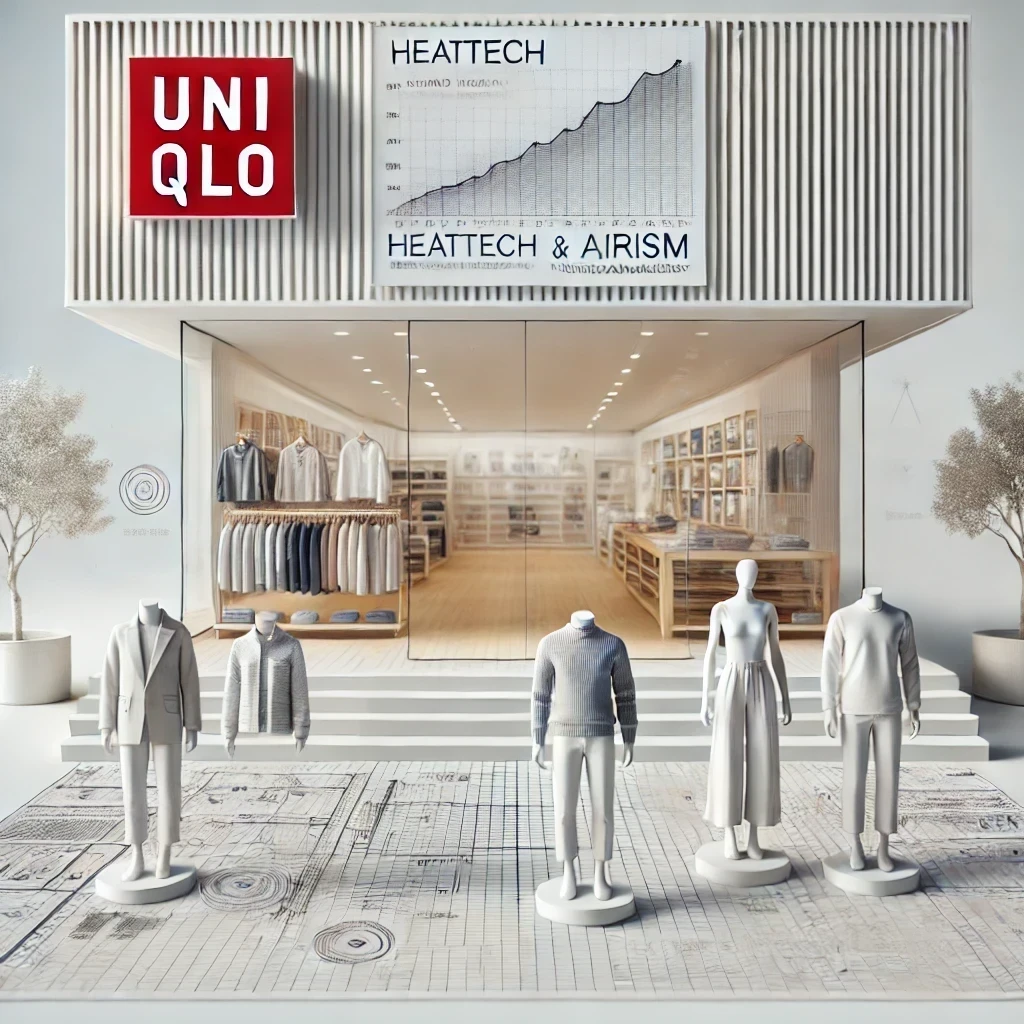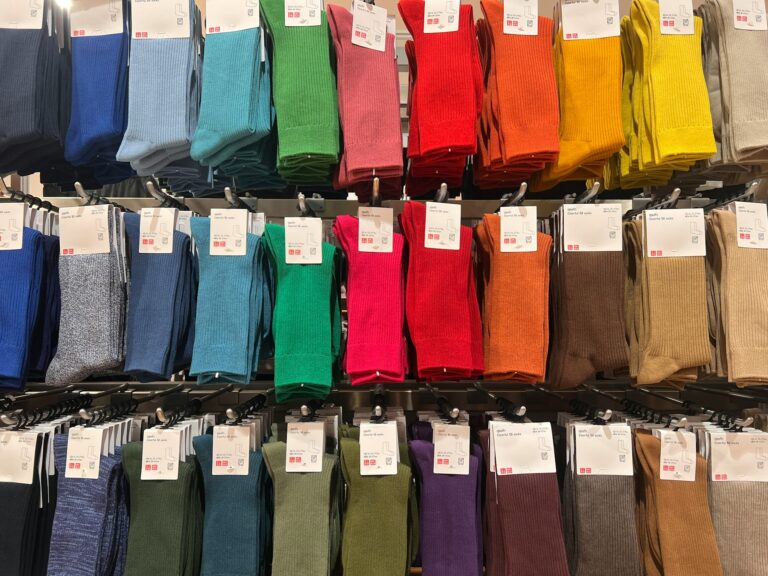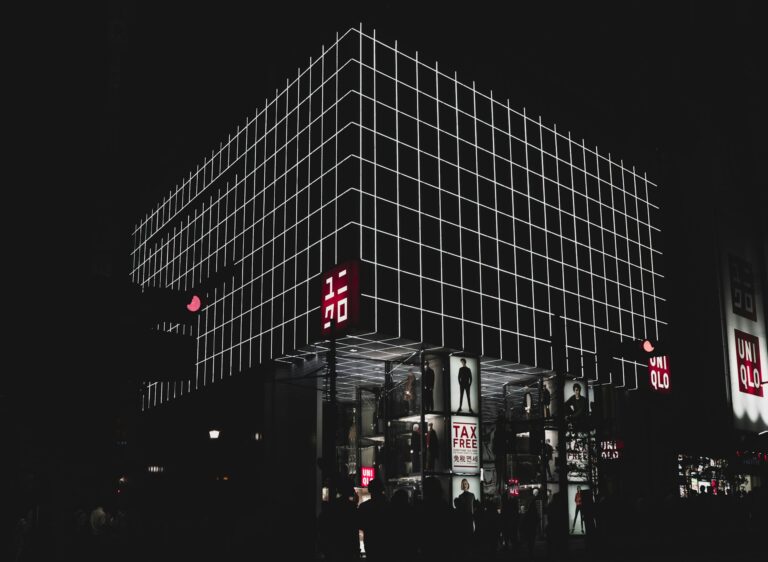How Uniqlo Uses Market Research to Design with the End in Mind

In 2023, Uniqlo made a whopping ¥890 million, becoming the largest clothing retailer in Japan by sales volume. It has become a dominant force in apparel not only within Japan but in the global market. But how did this small local retailer become the internationally recognized brand that it is? The answer is market research with the end in mind.
What this means is that Uniqlo had a vision, a goal that It hoped to achieve before setting out to perform the research. Beginning with the end allows you to effectively chart the steps you will take to effectively reach that end.
In this blog post we will dive into what makes Uniqlo different from other fashion brands, how it used market research to develop its two most iconic pieces, how it continues to modernize its research, the results, and finally, some tips for global brands to apply to their strategy.
The End of Mind Approach and Uniqlo
Uniqlo’s Long-term vision vs. Fast Fashion Short Term Thinking
It’s important to talk about fast fashion as it relate to Uniqlo since most of the fast fashion brands compete and operate in the same market space as Uniqlo. For those who don’t know fast fashion is a model that focuses on constant trend turnover, meaning they try to push out thousands of designs each season and follow trending designs.
Typical brands that operate this model, are Zara, H&M, and forever 21. The problem with this model is that products often run on short lifecyles, meaning excessive waste. High-inventory risks, mean there are frequent mark downs or stock that goes unsold. Finally, is that you can develop an over reliance or dependence on social media trends which can be inconsistent.
Uniqlo from the beginning made efforts to not go down this route and separate itself from this model. Instead it an approach of designing with longevity and consumer value in mind. The philosophy behind this is called ‘LifeWear’ where Uniqlo wants to be an everyday essential.
This means they focus on whats functional, versatile, and seasonless. They create products that are timeless and can be worn anytime for years to come. As we will see with HeatTech and AIRism, Uniqlo actively involves and listens to exactly what there consumers need.

Market Research: The Foundation of Product Development
Instead of looking to constantly changing trends, Uniqlo looks to consumers. They want to understand what their struggles are and what it is they need.
They’re research teams will analyze consumer shopping habits, whether online or in-store. They’ll look to climate trends and see how they can improve their fabrics, going so far as to develop their own as we will see. Instead of trends, they’ll look to cultural shifts in fashion preferences when designing
They also have customers participate in the development processes to ensure that the product they are developing is useful to them and fulfills the function they had envisioned. This is what as we will see formed the basis of their famous lines HeatTech and AIRism.
How Uniqlo Uses Market Research to Develop High-Performance Apparel
HeatTech: Solution to Consumers’ Need during Cold Weather
Before they began to develop HeatTech, Uniqlo wanted to understand how consumers dressed for Winter and cold climates in Japan. This led them to conduct various forms of market research, and the results were interesting.
They found that consumers preferred thin, light, and breathable layers, over bulky and heavy sweaters. The problem was that a lot of these clothes weren’t good at trapping sweat, which made it uncomfortable to use when indoors, and heaters were used, which caused the perspiration. However, the problem with light clothes was that it wasn’t as warm either.
This means consumers needed a product that is lightweight, thin, and usable in both indoor and outdoor environments. There wasn’t any such product in the market, so Uniqlo set out to create it.
They teamed up with a fabric and chemical company called Toray Industries to develop an all new fabric to tackle this issue. Together they developed extensive testing, developing over 10,000 prototypes which they provided to consumers. This was used to gain feedback directly from them to refine the product and ensure it was usable in real world scenarios.
This led to the birth of the HeatTech fabric. According to Uniqlo, the product works by absorbing moisture from your body and then converting that into heat which allows the fabric to be warm without all the bulk.
As a result this line has become a staple product every year during the Winter season. It has sold over 100 million pieces worldwide. It has also expanded into multiple variations including Extra warm, ultra warm, and HeatTech inner wear.

AIRism: Solution to Japan’s Brutal Summers
Japan in the summer is hot and extremely humid, seeing humidity levels of over 75% regularly. I was born and raised in Miami, and I think the summers are worse in Japan, simply because you interact with the weather more frequently in Japan than in Miami.
This means lots of sweating a problem that can make traditional cotton fabrics uncomfortable, gross, and keep you hot. Again, an issue Uniqlo set out to learn about from its consumers. They were able to identify that the consumers wanted fabric that is breathable, moisture-wicking, and makes you feel fresh throughout the day.
They teamed up with Toray Industries again to develop AIRism’s fabric. This fabric is created using ultrafine fibers that can absorb and release moisture quickly, all while feeling soft against the skin. They also incorporated anti-odor and antibacterial features to prevent you from smelling and keep you feeling fresh.
This product has become a Japanese and Southeast Asian staple, consistently being an all-year-round best seller. It has also led to its own AIRism lines, and AIRism masks for COVID.
For both HeatTech and AIRism, Uniqlo had set a goal to create a product that exactly met what their consumers needed, the end in mind. Then they set out to research what that product was by conducting market research to learn that, and then teaming up with people who could deliver it.
AI Powered Logistics, Demand Forecasting & Personalization
Unlike fast fashion which is about cranking out as much trendy clothes and creating waste, Uniqlo’s strategy allows it to be a lot more creative and efficient in delivering products and ensuring demand is met.
Similar to 7-Eleven, Uniqlo uses AI in their logistics systems. This allows them gather the data they get from tracking real-time purchasing behaviors and then optimize the inventory system and even predict demand.
A great example was they predicted a surge in HeatTech in Europe during a cold spell. This allowed them to adjust production to ensure there wasn’t a stock shortage but also avoid overproducing inventory.
This implementation outside of reducing overproduction, allows them to minimize markdowns therefore improving profit margins. It has also been used to optimize store layouts and restocking choices.
Uniqlo also has their own mobile app and website that customers can make purchases in. These platforms can track customer preferences and the use predictive analytics to recommend items based on previous shopping behaviors. For example someone who frequently buys HeatTech, may be recommended Ultra HeatTech or thermal accessories.

The Impact of Uniqlo’s Market Research Driven-Strategy
Uniqlos market research driven approach has allowed it become the largest apparel retailer in Japan. It has simultaneously expanded globally, with almost 1600 international stores.
This too utilized market research on the local level to learn what works in those respective countries. In Japan for example minimalist but functional styles were discovered to be a preference in this market. However, in the U.S. and Europe, Uniqlo introduce looser, oversized fits that were more in line with fashion trends there.
This has ultimately created a brand that is trustworthy and has strong customer loyalty. Utilizing AI has also allowed it produce less waste to create sustainable fashion that aligns with growing sustainability preferences in Japan and abroad. Finally, it out competes fast fashion in overall higher profit margins due to less overstock and markdowns.
Key Takeaways for Global Brands
1) Think Long-term: This is especially true for brands operating in Japan. Delivering high quality, functional, and timeless products, not only develop brand trust, but also build brand loyalty.
2) Invest in Customer Insights: Throughout Uniqlo’s research, its customers were directly involved in the process. Research what consumers want, not what’s popular.
3) Leverage AI & Data to make impactful decisions: Companies like Uniqlo and 7-Eleven are using AI to forecast inventory demand. This reduces waste and increases efficiency by delivering products to where they are needed and when they are needed.
4) Research Driven Sustainability: Understanding how your customers think can help you understand how environmental concerns influence their purchasing behaviors. This can help locate potential opportunities to improve.
If you like this content follow me on social media to get the latest updates and sign up for my newsletter to get newest content straight to your inbox.